
The Saunders Roe A.27 London was a British military biplane flying boat built by the Saunders Roe company. Only 31 were built, entering service with the Royal Air Force (RAF) in 1936. Although due for replacement by the outbreak of World War II, they saw some active service pending the introduction of the ultimately unsuccessful Lerwick.

The Saro A17 Cutty Sark was a British amphibious aircraft from the period between World War I and World War II, built by the British firm Saunders-Roe. The aircraft was named after the ship Cutty Sark, rather than the garment or the fictional witch.
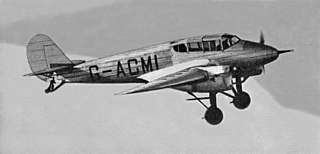
The Blackburn B-1 Segrave was a 1930s British twin-engine four-seat touring aircraft built by Blackburn Aircraft.

The Spartan Cruiser was a 1930s British three-engined transport monoplane for 6 to 10 passengers built by Spartan Aircraft Limited at East Cowes, Isle of Wight. It was a development of the Saro-Percival Mailplane for passenger use.

The Spartan Arrow is a British two-seat biplane aircraft of the early 1930s, built by Spartan Aircraft Limited.
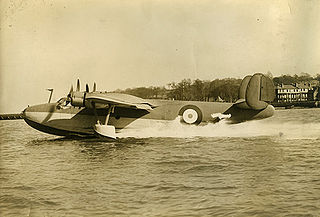
The Saunders Roe A.37 Shrimp was a 1930s British two-seat four-engined experimental flying boat built by Saunders-Roe Limited ("Saro") at Cowes.

The Miles M.17 Monarch was a British, light, touring aeroplane of the 1930s. It was a single-engine, three-seat, cabin monoplane with a fixed, tailwheel undercarriage.

The Miles M.28 Mercury was a British aircraft designed to meet the need for a training and communications plane during the Second World War. It was a single-engined monoplane of wooden construction with a twin tail and a tailwheel undercarriage with retractable main units.

The ANEC I and ANEC II were 1920s British single-engine ultralight aircraft designed and built by Air Navigation and Engineering Company Limited at Addlestone Surrey. One was privately constructed in Brisbane, Australia.
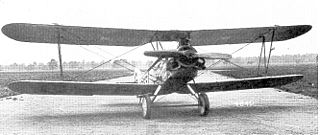
The Bristol Taxiplane and Bristol Primary Trainer were British single-engine biplane light aircraft built by the Bristol Aeroplane Company in the early 1920s. A total of 28 were built, being mainly used as trainers.

The B.A Swallow was a British light aircraft of the 1930s. It was a license-built version by the British Klemm Aeroplane Company of the German Klemm L.25. A total of 135 were built.

The Nightjar was a British carrier-based fighter aircraft of the early 1920s. It was a modification of the earlier Nieuport Nighthawk fighter produced by Gloster after the Nieuport & General company, which designed the Nighthawk, closed down. Twenty-two were converted, serving with the British Royal Air Force from 1922 to 1924.

The Saro A.21 Windhover was a British amphibious aircraft from the period between World War I and World War II, constructed by Saunders-Roe, or Saro. It was originally advertised as the A.19 Thermopylae after the famous clipper ship, being an enlarged version of the Saro Cutty Sark.

The Supermarine Sea King was a British single-seat amphibious biplane fighter designed by Supermarine in 1919. Developed from the Supermarine Baby and the Supermarine Sea Lion I, the Sea King was a single seater biplane powered by a pusher 160 horsepower (120 kW) Beardmore engine. It first flew in early 1920 and was exhibited by Supermarine at the 1920 Olympia Show in London. The company released drawings of the aircraft's design prior to the show; what it exhibited was probably a modified Supermarine Baby.
The Handley Page HP.14, also designated Handley Page R/200 was a prototype British naval reconnaissance aircraft of World War I, capable of operating from the decks of the Royal Navy's aircraft carriers or as a floatplane. Only three were built, the Parnall Panther being preferred.
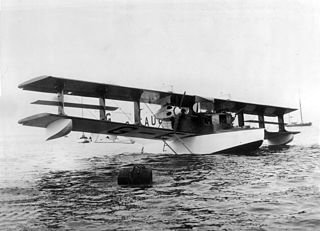
The Saunders Kittiwake was a British amphibian flying-boat built by S. E. Saunders at East Cowes, Isle of Wight. Only one was built, and it was scrapped after less than a year of testing.

The Mosscraft MA.1 was a British light two-seat low-winged sporting monoplane of the 1930s.
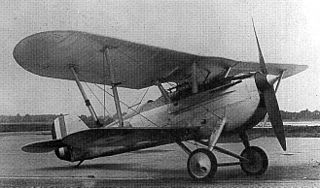
The Saunders A.10 was a private venture four-gun fighter. It was a single-seat, single-engined biplane with poor handling, later serving as a gun-testing aircraft.
The Pobjoy Pirate was a three-seat, high-wing monoplane designed to compete with the de Havilland Leopard Moth using a low-power but light Pobjoy radial engine. Flight tests showed the Pirate to be uncompetitive and its development was rapidly abandoned.
The Couzinet 100 was a three-engined, three-seat touring aircraft designed and built in France in 1930. Two variants, the Couzinet 101 and Couzinet 103, were very similar apart from their engines; no variant reached production.

















